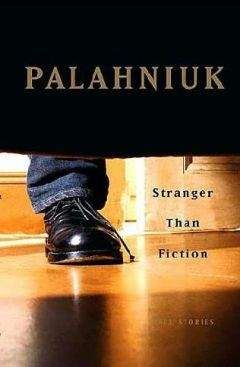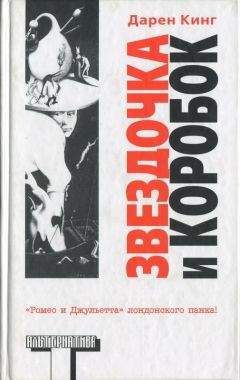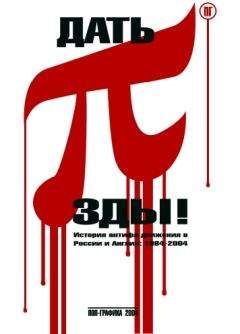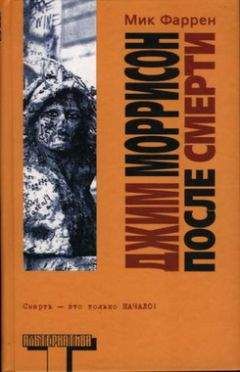Chuck Palahniuk - Stranger Than Fiction (True Stories)

Скачивание начинается... Если скачивание не началось автоматически, пожалуйста нажмите на эту ссылку.
Жалоба
Напишите нам, и мы в срочном порядке примем меры.
Описание книги "Stranger Than Fiction (True Stories)"
Описание и краткое содержание "Stranger Than Fiction (True Stories)" читать бесплатно онлайн.
"Full of wonderful moments…Palahniuk's voice is so distinctive and intimate-he writes as though he is recounting a great story to a close friend." — Los Angeles Times
"Step into Palahniuk's dark worldview and watch for what crawls out. These stories are true to him and no one else." — The Oregonian
“One of the oddest and most oddly compelling collections to come along for some time.” —The Milwaukee Journal Sentinel
“In Chuck Palahniuk’s world, the ride is fast, often disturbing, and there is never any holding back.” —The New Orleans Times-Picayune
“Eccentric, idiosyncratic, and often entertaining.” —The Onion
"Priceless grace notes from an exceptionally droll and sharp-eyed observer." — The New York Times
“Rarely does a collection of essays continually resonate with a main theme and accumulate a weight that would lead you to call it a great book. . This is a pretty great book.” —The Seattle Times
"The book's lurid appeal rests largely on being let in on Palahniuk's secrets, the raw material for much of his fiction. . Acts that give spice to his novels are made more menacing when encountered in the real world." — Black Book
With Jerry spending every winter fishing in Mexico, the castle is a little worse for wear. Inside the keep, sections of Sheetrock and insulation are pulled down to show dark stains and water damage inside the walls. You can smell mildew in stale air.
"I used a system of downspouts inside the walls, which was fine-made out of ABS," he says. "When I did the gutters on top of the building, I used a trough-type system. Then I had to get a downspout through this galvanized metal into my ABS. We had some made, and they worked fine. We used a fiberglass buildup roof and it held up really good, but then we started getting water leaks. This was maybe four years ago. Lo and behold, the galvanized drop out of the gutter had rusted away."
The stucco isn't as white as it used to be. In some places it's cracked and chipping away. In a few spots, the metal lath underneath shows through.
"The worst part is the exterior stucco," Jerry says. "I've coated it twice: the first time, and then I redid it about twelve years ago. I should go around and clean it up. I use water and bleach and spray it. Then it's a matter of batching. You get a mixer and a sprayer and all your material, and you keep mixing and spraying, and it goes pretty fast.
"This place is in pretty rough shape, compared to how it was," he adds. "But it's fixable."
So this is the year for fixing the castle. Among other projects. In the garage is a stripped-down thirty-year-old, twenty-one-foot StarCraft fishing boat. Jerry is installing a metal dragon that will rear up from the bow with a red eye on one side and a green eye on the other. The dragon is plumbed to spit fire. He's adding twelve inches to raise the bow and help the flat-bow boat handle better in rough water.
"I'll have it down in Mexico, and we get into some stuff in the afternoons," he says. "The wind picks up, and you're riding in ten-, twelve-foot waves. It causes you some concern with an open bow."
In retrospect, he says, "My advice would be: Don't do it. It's obvious, looking at the exterior, that stucco is not conducive to this area. They've come out with new exterior stucco material I'm going to use, and it's a hell of a lot better. But I've lived here with women, and they don't like this, and they don't like that, and they don't like going up and down the stairs. That's probably why there's no women here now." And again, he laughs.
Jerry Bjorklund laughs a lot. Far overhead, you can hear the dull roar of a jetliner making the "castle turn" into Portland International Airport.
And it all goes back to that one night, drinking Black Velvet…
"The problem is I told somebody I was going to do it," Jerry says. "That was probably my biggest downfall. If I say I'm going to do something, I don't give a damn what it takes."
But that's not to say Jerry Bjorklund has regrets.
"Too many people, to my mind, they do things like everybody else does, and I'm not going to be like that. Never have been." And, again, he lights another Mexican cigarette and laughs his gravelly laugh.
For Roger DeClements-who has built three castles-the first was more about speed and saving money. Born in Edmonds, Washington, Roger worked as a building contractor during the 1970s. Roger has a wife and three children, and because his wife is afraid of doctors, all the kids were born in his castles. The first two kids, in a castle he built in Machias, Washington, five miles north of Snohomish, which is east of Everett, which is north of Seattle. It's a little town named after a town in Maine, with a little white steepled church built in 1902, and it sits in a valley on the Pilchuk River.
"My first castle," Roger says, "I got financing. It was 1980, when interest rates were eighteen percent, and we went to the local banks and nobody was giving loans then. Somebody mentioned Citicorp, so we went to Citicorp, and they said, 'Sure… at eighteen percent…»
Still, Citicorp didn't know what their money was financing.
"They didn't even know it was going to be a castle," Roger says. "They just wanted security, so we used another piece of property as collateral. The second castle, we used our own money. This third castle, we used our own money, then when we got farther along we just had a banker come up and look and see it to refinance it.
"The first castle was actually a concrete tilt-up castle. We carved the shape of the walls in the sand, put the rebar in there, poured the concrete in, tilted them up and picked the shape out of the sand. It was a very inexpensive castle and completed in five weeks. I did everything from start to finish."
Basing them on Disneyland castles and castles in movies, Roger drew his own plans.
"In Washington State," he says, "you have to take your plans to a structural engineer and they'll put their stamp on. And then, no problem after that.
"My degree is in chemistry and physics, but I've been doing a lot of architecture and engineering, myself," Roger explains. "And I specialize in castles.
"The first one was a single tower," he says. "Eight hundred square feet on two floors. It was built basically like a basement, with concrete walls we tilted up. Then we insulated by furring out with two-by-fours and doing Sheetrock on the inside. A lot of people across the country, that's how they'll start out building their castles, but I found that doesn't work very well. Plus, everybody was coming out and asking, 'Is that real stone? So I got so tired of that question."
He adds, "We built it in one day, so it was quite the surprise for the neighborhood. Boom-and there it was.
"Kids would love to sneak down the driveway to see how far they could get before getting too scared. People would love to stop on the road and take pictures."
That first castle cost only $14,000 and took only five weeks from start to finish. It still sits on five acres near the bank of the Pilchuk River. It has electric heat, but what Roger gained in speed and cost, the DeClements family paid for in comfort.
"Furring the walls out with insulation," Roger says, "that doesn't work well. The cold goes right through the concrete. It gets right to where the insulation is. Then the warm inside air filters through the insulation and contacts the cold surface of the concrete or blocks. Then the water will condense. As soon as one water molecule condenses, another one is there to take its place. So you get this continuous condensation on the cold wall behind the insulation. That's a problem, because it will cause mold to grow, and it smells like a basement."
In order to go back to college and study for a graduate degree, Roger sold that castle to artists to use as a studio. "Before I built my second castle, I went back to college and learned a lot," he says. "I was a contractor from 75 until about 87, building homes and commercial buildings, using the traditional methods. Going to college, I learned a lot more about the physical process of what's going on with heat transfer and moisture."
He says, "So for the second castle we built, we went to real stone."
That second castle stands on a rock above a waterfall in Sedro-Woolley, Washington. It's perched on a stone precipice, high above a nature pool where local kids swim all summer. Instead of electric heat, the second castle was heated with a wood stove.
He says, "The second one we designed to look like a castle, and you couldn't tell when it was built. We used all stone and incorporated a new construction method, too, starting with a double-wall castle where you go from rock on the outside, then a layer of rigid, extruded polystyrene, then reinforced concrete, and then you'd go back to stone again, so you couldn't see the concrete or insulation on the inside. All you could see is the stone."
Step-by-step, Roger explains: "The first thing to go up is the rebar grid, then the insulation boards. Then we run the conduit and plumbing, high-speed Internet, whatever you want. Then you build a double rock wall, on the inside and the outside. After you get up about eight feet, you fill it with concrete. Then you do it over again. The two rock walls, which are held together by stainless-steel rods, form a permanent concrete form. It's just like the Romans did a long time ago. They did the same thing. They didn't use metal ties, they used extra-long rocks to tie the two rock walls together.
"We try to find a quarry, where the stones come out rectangular-shaped, ashlar stones, so we're not trying to stack a whole bunch of round stones. It can be done with river rock, but it will take a lot more time, and it won't be quite as strong."
Instead of five acres, the second castle sits on twenty. Instead of five weeks, this castle took Roger from 1992 to 1995 to build.
"The second castle couldn't be seen from the road like the first one could," he says. "It was a little more remote. I got a good deal on the land because the only way to get there was you had to cross this hundred-foot-deep gorge. So I built a metal bridge, then all the materials were hauled over in a wheelbarrow. Sometimes I go back there and I can't believe what I'd done."
Still, Roger DeClements says he loves the work. "A lot of people will come up and say, 'Oh, I can't believe this. I could never do this. To me, it's basically clear and simple. It's very relaxing to do it. It's very peaceful and relaxing to be out there in the fresh air with the trees and the hills… stacking stones."
It's interesting to note here, Carl Jung began to explore his subconscious by playing a building game with stones. Like a puzzle. Putting them together, he felt he was plunged into outer space, where he had visions that would shape the rest of his life.
"It's like doing a jigsaw puzzle," Roger DeClements says. "Getting all the pieces together. But it doesn't strain you or keep your mind going a mile a minute. And then you can get creative, because you can make curves and towers and different shapes with it."
And living in a castle?
"It feels different to live in a castle instead of a house," he says. "It's quiet. It doesn't shake in the wind. The temperature doesn't go up and down with the outside temperature. The stone holds it constant." He adds, "I haven't been able to make the transition to a medieval knight or something. I'm still the same person."
That castle was forty-five feet tall, with arched windows and four thousand square feet of living space on three floors. Still, when it came time to sell and move on, the first two realtors balked. They said there were no comparable sales in the area. Subsequent realtors said not to worry, and they immediately had three full-price offers and sold that castle in 1995 for $425,000.
The search was on for new "castle land." They looked in Utah, but land was too expensive or no water was available. "We went from Logan, we went up to Jackson, to Targee, Sun Valley, and up into Montana to Big Sky, then to over here, and this just beat them all by a mile."
Now, here they are in Bonner County, Idaho, high in the Schweitzer Mountain ski resort.
"You can do plans ahead of time or you can just build," Roger says. "It depends on where you build. Different locations, different cities, different counties have different permit requirements. Some of them can take a couple years to give a permit. Some of them can take ten minutes. That's one reason we like Idaho. They're permit-friendly."
He says, "If you're searching for castle land, I tell a lot of people to go to the county planning department first and ask them. A lot of people will think: 'I want an eighty-foot-tall tower… So they need to check if the county has a thirty-five-foot height restriction, or any architectural requirements."
The Idaho castle, Roger named Castle Kataryna for his daughter, who was born here. It has a winding staircase inside, walnut woodwork, and pointed Gothic doors and windows, many of them stained-glass.
Touring the castle, Roger points out the walnut window frames he made. "In the second castle," he says, "the windows were put in after the walls were built. In this third castle, the windows actually went in right after the rebar and insulation, before the rock goes up around them. That gave us a lot more authentic look and finish. In the second castle, we had to try to cut the boards to fit, then caulk around them. In the third castle, the windows went in first, wrapped in plastic to protect them, stone was built around them, we attached the window frames only to the outside rock layer, which can move and expand. The inside stone layer stays seventy-two degrees, and the outside can go from zero to a hundred, so it gets bigger and smaller. This way the windows will move with the outside. We attach them to the outside because that's where we want to seal them from the weather."
Another improvement with this latest castle is the «hydronic» heating system, where a boiler heats water that runs through piping under the floors. It's even, quiet heat, and the castle's thermal mass of stone will stay warm for three days after the heat is turned off.
In a little room near the castle gates, Roger shows the boiler, saying, "I like it because I couldn't have baseboards or forced-air registers in the look of a castle. This hides it, so it's invisible, plus you don't have the noise of the fans coming on."
Between the insulated stone walls and the hydronic heat, Roger DeClements has evolved his perfect formula for a livable castle. Well, almost perfect…
"In the first castle," he says, "I didn't anticipate the problem with the mold. Which is actually a big thing now. A few years ago it was radon, now it's mold in homes. They make homes so tight that they've locked all this moisture in there, and as soon as moisture gets to a cold surface it condenses. With our new method, with the insulation layer inside the wall, the moisture never has the chance to get near it. So my wife complains this castle is too dry. We have twenty feet of snow piled outside, and she says, 'This is too dry.»
To solve the dry air, he's built a heated swimming pool in the stairwell. There, a waterfall will cascade from the top of a stone newel post. Candles will sit on stone ledges, and the pump and filters will be tucked away in an underwater grotto cave.
Like Jerry Bjorklund, Roger found his wife had some castle ideas of her own. Breaking ground in June of 1999, he'd planned to build the third castle by using a construction boom-much like the tripod of trailer tongues Jerry built-but his wife wouldn't let him cut the trees he'd have to remove to let the boom swing around. So, as with the second castle, Roger carried each stone up by hand.
Now, thanks to his wife, the castle is surrounded by native tamarack trees, cedars and pines and rocky fields of huckleberry bushes. Deer and elk and bear roam the neighborhood. The view goes all the way to the Rocky Mountains and Montana. It's a view Roger's had plenty of time to enjoy.
"I got all the stone up there one stone at a time," he says. "The second castle was built all by hand, carrying the stone over that bridge by wheelbarrow. As we built those double rock walls, we put logs sticking out through the walls on both sides. Then we'd put planks across those. We'd put logs through the walls, then pull them out as we worked our way up. That's actually how they did the old castles. They had a name for them-they called them 'put logs. If you look at old photos of the castles in Europe you see all these holes in the walls. Of course, some were to shoot arrows out of, but the little holes were where they put these logs so then you don't have scaffolding going all the way up the walls. I had no idea that's how they did it."
Подписывайтесь на наши страницы в социальных сетях.
Будьте в курсе последних книжных новинок, комментируйте, обсуждайте. Мы ждём Вас!
Похожие книги на "Stranger Than Fiction (True Stories)"
Книги похожие на "Stranger Than Fiction (True Stories)" читать онлайн или скачать бесплатно полные версии.
Мы рекомендуем Вам зарегистрироваться либо войти на сайт под своим именем.
Отзывы о "Chuck Palahniuk - Stranger Than Fiction (True Stories)"
Отзывы читателей о книге "Stranger Than Fiction (True Stories)", комментарии и мнения людей о произведении.









